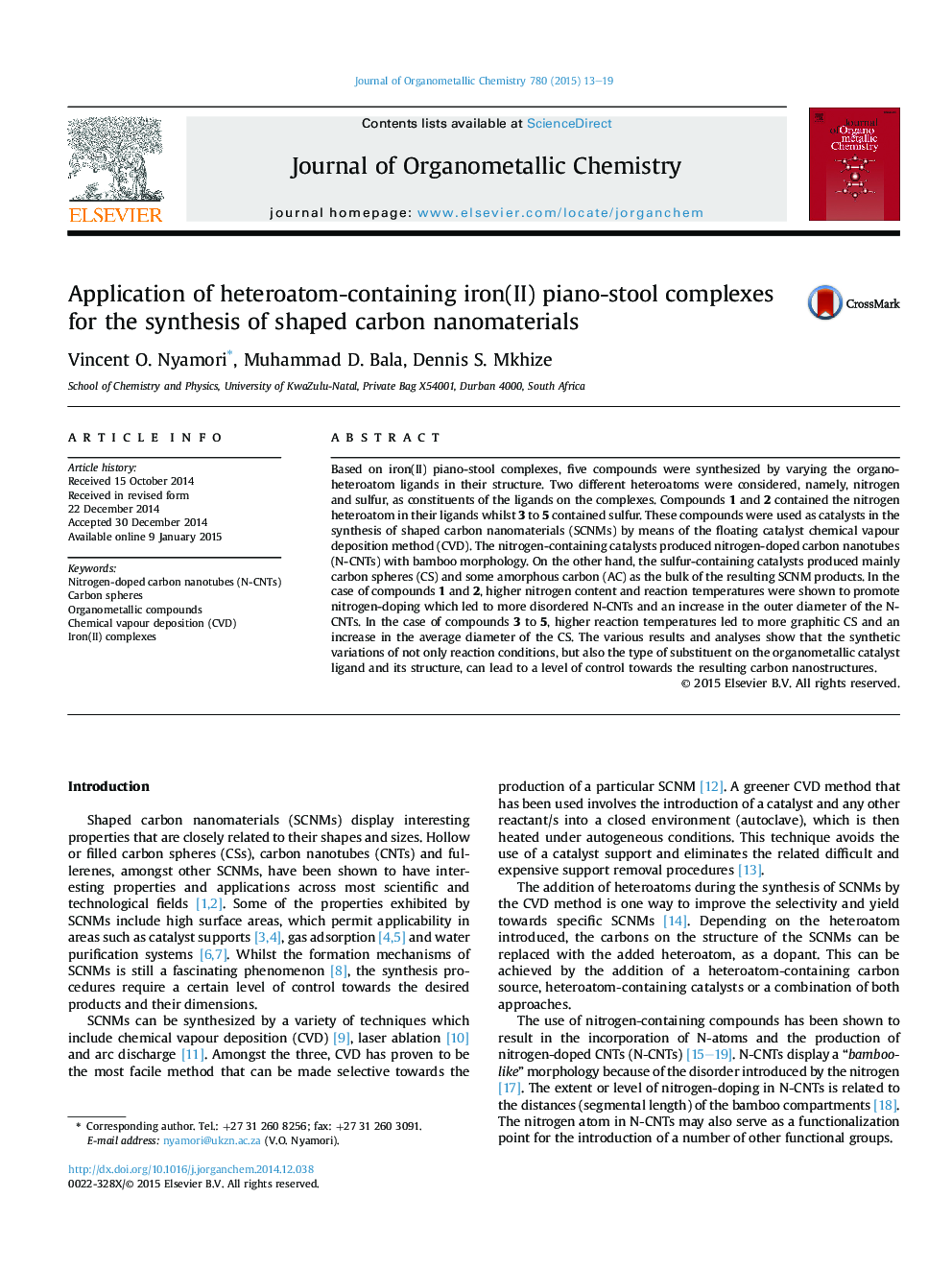| کد مقاله | کد نشریه | سال انتشار | مقاله انگلیسی | نسخه تمام متن |
|---|---|---|---|---|
| 1325224 | 1499862 | 2015 | 7 صفحه PDF | دانلود رایگان |

• Novel heteroatom-containing iron(II) piano-stool as catalysts for SCNM synthesis.
• Nitrogen-containing iron(II) piano-stool complexes selectively yielded N-CNTs.
• Sulfur-containing iron(II) piano-stool complexes selectively yielded CSs.
• Varying the synthesis temperature altered the physical properties of SCNMs.
Based on iron(II) piano-stool complexes, five compounds were synthesized by varying the organo-heteroatom ligands in their structure. Two different heteroatoms were considered, namely, nitrogen and sulfur, as constituents of the ligands on the complexes. Compounds 1 and 2 contained the nitrogen heteroatom in their ligands whilst 3 to 5 contained sulfur. These compounds were used as catalysts in the synthesis of shaped carbon nanomaterials (SCNMs) by means of the floating catalyst chemical vapour deposition method (CVD). The nitrogen-containing catalysts produced nitrogen-doped carbon nanotubes (N-CNTs) with bamboo morphology. On the other hand, the sulfur-containing catalysts produced mainly carbon spheres (CS) and some amorphous carbon (AC) as the bulk of the resulting SCNM products. In the case of compounds 1 and 2, higher nitrogen content and reaction temperatures were shown to promote nitrogen-doping which led to more disordered N-CNTs and an increase in the outer diameter of the N-CNTs. In the case of compounds 3 to 5, higher reaction temperatures led to more graphitic CS and an increase in the average diameter of the CS. The various results and analyses show that the synthetic variations of not only reaction conditions, but also the type of substituent on the organometallic catalyst ligand and its structure, can lead to a level of control towards the resulting carbon nanostructures.
Novel nitrogen and sulfur heteroatom-containing iron(II) piano-stool were used as catalysts for shaped carbon nanomaterial (SCNM) synthesis. The nitrogen-containing iron(II) piano-stool complexes selectively yielded nitrogen-doped carbon nanotubes (N-CNTs). Sulfur-containing iron(II) piano-stool complexes selectively yielded carbon spheres (CSs). Varying the synthesis temperature altered the physical properties of SCNMs.Figure optionsDownload as PowerPoint slide
Journal: Journal of Organometallic Chemistry - Volume 780, 15 March 2015, Pages 13–19